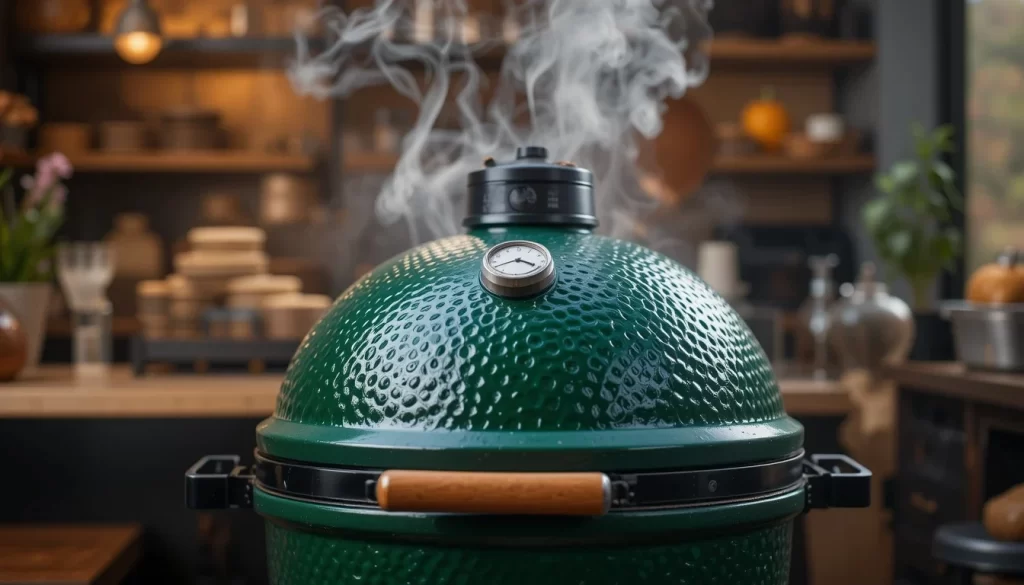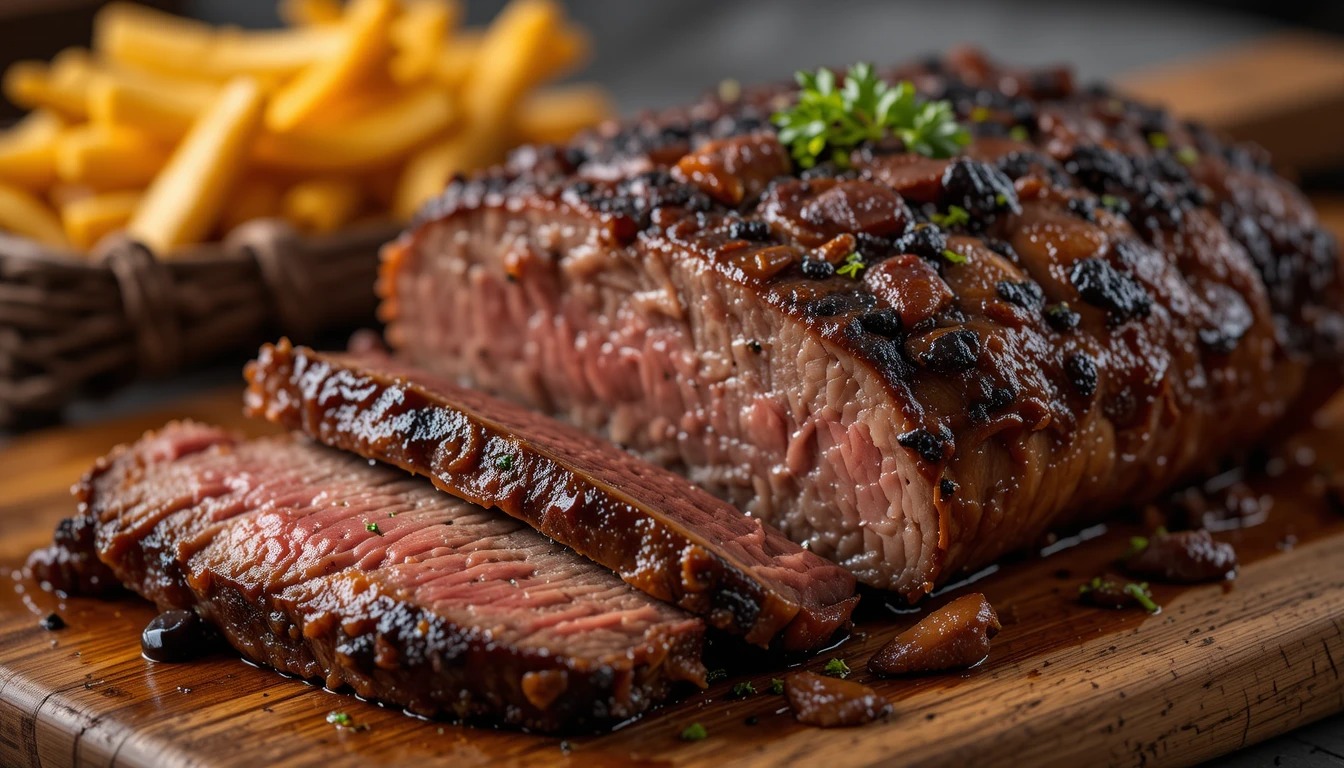Mastering the Art of Smoke: Essential Airflow and Smoke Management Techniques for Perfect BBQ in 2025

Ah, the tantalizing aroma of smoked meat wafting through the air! There’s nothing quite like it, is there? But here’s the thing: achieving that perfect smoky flavor isn’t just about tossing some wood chips into your smoker. It’s an art form that requires finesse, patience, and most importantly, a solid understanding of airflow and smoke management. Did you know that proper smoke management can increase the flavor profile of your food by up to 70%? That’s right, folks! In this guide, we’ll dive deep into the world of smoking food airflow and smoke management, helping you transform your backyard BBQ from good to absolutely mind-blowing. So, grab your tongs and let’s get smoking!
The Science Behind Smoke and Airflow in BBQ
Let me tell you, when I first started barbecuing, I thought it was just about throwing some meat on the grill and hoping for the best. Boy, was I wrong! There’s a whole science behind smoke and airflow that can make or break your BBQ game. I’ve learned a lot over the years, and I’m excited to share some of that knowledge with you.
Understanding the combustion process and smoke production
Okay, so here’s the deal with combustion and smoke production. It’s not just about setting things on fire and watching the smoke billow. There’s actually a lot going on behind the scenes. When wood burns, it goes through different stages. First, there’s the initial ignition where the wood starts to heat up. Then, as it gets hotter, the wood starts to break down and release gases. These gases are what we see as smoke.
But here’s the kicker – not all smoke is created equal. The best smoke for BBQ is what we call “thin blue smoke.” It’s almost invisible and has a sweet, clean smell. That’s what you’re aiming for. The thick, white billowing smoke? That’s bad news. It means your fire’s not burning efficiently and can leave your food tasting bitter.
I remember one time I was so excited to use this new cherry wood I’d bought. I threw a big chunk on the fire and watched with pride as thick white smoke poured out of my smoker. Let’s just say that brisket ended up tasting like an ashtray. Lesson learned!
The role of oxygen in maintaining consistent temperatures
Now, let’s talk about oxygen. It’s not just for breathing, folks! In BBQ, oxygen is crucial for maintaining consistent temperatures. Think of oxygen as the fuel that keeps your fire burning. Too little, and your fire will smolder and die. Too much, and it’ll burn too hot and fast.
Getting the right amount of oxygen is like finding that sweet spot on your couch – it takes some wiggling around, but once you find it, it’s perfect. You want just enough oxygen to keep your fire burning steadily at the right temperature. This is where vent control comes in, but we’ll get to that in a bit.
How airflow affects smoke density and flavor intensity
Airflow is like the conductor of your BBQ orchestra. It directs the smoke, controls its density, and ultimately affects the flavor intensity of your food. Good airflow means your smoke is moving efficiently over your meat, imparting flavor without overwhelming it.
Poor airflow can lead to stale smoke sitting in your smoker, which can make your food taste bitter or overly smoky. Trust me, I’ve had my fair share of overly smoky ribs that tasted like I’d scraped them off the bottom of a campfire. Not appetizing at all!
The impact of different wood types on smoke quality
Finally, let’s chat about wood types. This is where you can really get creative with your flavors. Different woods produce different types of smoke, and each one brings its own unique character to your BBQ.
For example, hickory gives a strong, bacon-like flavor that’s great for pork and beef. Apple wood is milder and slightly sweet, perfect for poultry. Mesquite is intense and can easily overpower your meat if you’re not careful.
I once made the mistake of using mesquite for a long smoke on a delicate fish. Let’s just say it tasted less like a delicious seafood dinner and more like I was eating a bonfire. Experiment with different woods, but remember – sometimes less is more!
Mastering Airflow Control for Optimal Smoking Results
Alright, now that we’ve covered the basics, let’s dive into the nitty-gritty of airflow control. This is where the magic happens, folks. Get this right, and you’ll be serving up BBQ that’ll make your neighbors weep with joy.
Adjusting intake and exhaust vents for precise temperature regulation
Controlling your smoker’s temperature is all about managing those vents. Think of your intake vent as the gas pedal and your exhaust vent as the brake. The intake vent controls how much oxygen gets to your fire, while the exhaust vent lets out heat and smoke.
Here’s a trick I learned the hard way: start with your exhaust vent fully open and use your intake vent to control the temperature. Why? Because closing the exhaust can trap stale smoke and create that bitter flavor we talked about earlier.
I remember one time I was trying to lower the temperature in my smoker, so I closed both vents almost completely. Big mistake! The fire started smoldering, and my beautiful pork shoulder ended up tasting like an old ashtray. Now, I always keep that exhaust vent at least partially open.
Techniques for creating convection currents within your smoker
Creating good convection currents in your smoker is like setting up a little wind tunnel for your meat. You want that smoke and heat to circulate evenly around your food. This helps ensure even cooking and consistent smoke flavor.
One technique I’ve found useful is using a water pan. Not only does it help regulate temperature, but it also creates steam that helps the smoke stick to your meat. Plus, it adds humidity to your smoker, which can help prevent your meat from drying out.
Another trick is to use a deflector plate if your smoker doesn’t have one built-in. This helps distribute the heat and smoke more evenly. I once MacGyvered a deflector plate out of a disposable aluminum pan when I realized my new smoker didn’t have one. It wasn’t pretty, but it did the job!
Balancing airflow to achieve the perfect thin blue smoke
Ah, the elusive thin blue smoke. It’s like the Holy Grail of BBQ. Achieving it is all about balance – the right amount of fuel, oxygen, and heat. Too much oxygen and your fire burns too hot and fast. Too little, and you get that thick, white smoke we want to avoid.
I’ve found that starting with a small, hot fire and gradually adding fuel works best. You want to maintain a clean-burning fire that produces just a wisp of blue smoke. It might not look impressive, but trust me, it’s what you want for the best flavor.
Common airflow mistakes and how to avoid them
Let me tell you, I’ve made every airflow mistake in the book. But hey, that’s how we learn, right? One common mistake is over-adjusting your vents. It’s tempting to fiddle with them constantly, but your smoker needs time to respond to changes. Make small adjustments and wait at least 15-20 minutes before changing anything else.
Another mistake is not accounting for weather conditions. Wind can really mess with your airflow, so you might need to adjust your technique on blustery days. I once tried to smoke a brisket on a super windy day without adjusting my setup. Let’s just say it was a rollercoaster ride of temperature spikes and dips. Now, I always check the weather forecast before a big smoke.
Advanced Smoke Management Strategies for Flavor Enhancement
Okay, now we’re getting into the good stuff. These are the techniques that’ll take your BBQ from “pretty good” to “holy smokes, this is amazing!” It’s all about managing your smoke to create deep, complex flavors that’ll have everyone asking for your secret.
Utilizing the “low and slow” method for deep smoke penetration
The “low and slow” method is a BBQ classic for a reason. It allows the smoke to penetrate deep into the meat, creating layers of flavor that you just can’t get with quick cooking. But it’s not just about cooking at a low temperature for a long time – it’s about maintaining consistent conditions for hours on end.
I learned this lesson the hard way with my first overnight brisket. I thought I could just set it and forget it. Woke up to find my fire had died out halfway through the night, and I was left with a half-cooked hunk of beef. Now, I use a remote thermometer with alarms to alert me if the temperature drops too low or spikes too high.
Implementing smoke cycling techniques for layered flavors
Smoke cycling is a technique where you vary the intensity of smoke throughout the cooking process. It’s like layering flavors in a complex dish. You might start with a stronger smoke flavor, then taper off as the cook progresses.
One way to do this is by using different woods at different stages of the cook. For example, I might start with a stronger wood like hickory, then switch to a milder fruit wood later in the cook. This creates a depth of flavor that’s really hard to beat.
I once experimented with this technique on a pork shoulder, starting with hickory, moving to apple, and finishing with a bit of cherry. The result was a beautifully complex flavor that had my guests raving. Don’t be afraid to get creative with your wood combinations!
Managing moisture levels to prevent bitter or acrid tastes
Moisture management is crucial for preventing those nasty bitter or acrid flavors that can ruin a good BBQ. Too much moisture can lead to steaming rather than smoking, while too little can cause your meat to dry out and absorb too much smoke.
Using a water pan is one way to help manage moisture levels. It not only adds humidity to your smoker but also helps stabilize the temperature. But be careful not to overdo it – you don’t want to turn your smoker into a sauna!
I’ve also found that spritzing your meat periodically can help. A simple spray bottle filled with apple juice, vinegar, or even just water can work wonders. It helps keep the surface of the meat moist, which allows it to continue absorbing smoke flavor without drying out.
Fine-tuning smoke exposure times for different types of meat
Not all meats are created equal when it comes to smoke exposure. Some can handle long periods of smoke, while others can quickly become overpowered. It’s all about finding the right balance for each type of meat.
For example, a big, tough cut like a brisket or pork shoulder can handle hours of smoke exposure. But something delicate like fish or chicken might only need a short blast of smoke at the beginning of the cook.
I learned this lesson the hard way when I tried to smoke some salmon for as long as I would a pork butt. The result was a piece of fish that tasted like it had been cured in an ashtray. Now, I know to limit smoke exposure for delicate meats to just the first hour or two of cooking.
Remember, the goal is to complement the natural flavors of the meat, not overpower them. It’s like seasoning a dish – you want to enhance, not dominate. With practice, you’ll develop a feel for how much smoke each type of meat can handle.
And there you have it, folks! These advanced techniques might take some practice to master, but trust me, the results are worth it. Before you know it, you’ll be turning out BBQ that’s so good, your neighbors will be lining up with plates in hand every time they smell smoke coming from your backyard. Happy smoking!
Conclusion
And there you have it, BBQ enthusiasts! Armed with these smoking food airflow and smoke management techniques, you’re now ready to take your outdoor cooking to new heights. Remember, practice makes perfect, so don’t be afraid to experiment and find what works best for you. The journey to becoming a smoke master is filled with delicious discoveries and mouthwatering results. So fire up that smoker, apply these newfound skills, and get ready to impress your friends and family with some seriously epic BBQ. Happy smoking, and may your future be filled with perfectly smoked, flavor-packed feasts!
FAQ
- How does airflow affect the temperature in my smoker?
Airflow directly impacts temperature by controlling oxygen supply to the fire. More airflow increases heat, while less airflow reduces it. - What’s the ideal smoke color for perfect BBQ?
Aim for thin, blue smoke. White, billowing smoke often indicates incomplete combustion and can lead to bitter flavors. - How often should I adjust the vents on my smoker?
Monitor and adjust vents as needed to maintain consistent temperature, typically every 30-60 minutes depending on conditions. - Can too much smoke ruin my food?
Yes! Over-smoking can result in bitter, acrid flavors. Balance is key for optimal taste. - What’s the best way to manage moisture in my smoker?
Use water pans to add humidity, and consider wrapping meats in foil during later stages of cooking to prevent over-drying.
POR
- Amazing Ribs – The Science of BBQ & Grilling: https://amazingribs.com/technique-and-science/
- Smoking Meat Forums – Airflow Management: https://www.smokingmeatforums.com/threads/airflow-management.173530/
- BBQ Pit Boys – Smoke Management Tips: https://bbqpitboys.com/blogs/tips-tricks/smoke-management-tips


